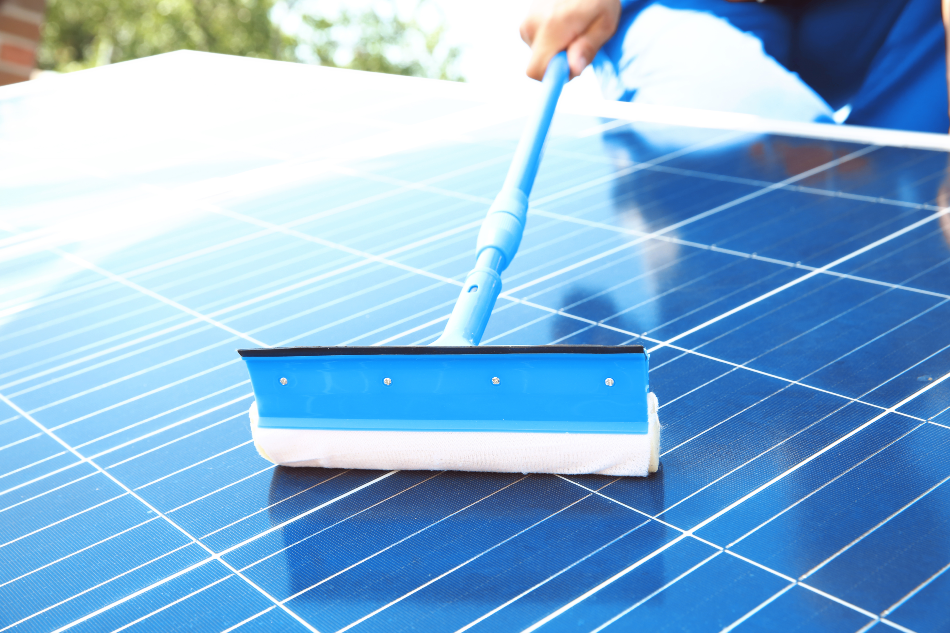
Africa Studio / Shutterstock
Thin film technology – the development, manufacture, and application of incredibly thin materials (ranging between a fraction of a nanometer and several micrometers thick) – is playing an increasingly important role in the critical endeavor to tackle climate change.
Recently, researchers have shown that genetically modified bacteria applied to poly (tetrafluoroethylene) (PTFE) thin film materials creates an effective biofilter against extremely toxic substances – arsenic and uranium – that can be leaked in industrial practices (Cuffari, 2019).
The most widely applied thin film clean technology is thin film photovoltaic (PV) cells used to harness renewable solar energy. Since calculator manufacturers began using amorphous silicon to create photovoltaic strips to power their devices, thin film PV has matured significantly. Gallium arsenide-based thin film PVs are the most efficient in use today, converting 28.8% of solar energy they receive into electricity (Moradiya, 2019). Perovskite, used in thin film PV since 2009 is also helping the solar energy sector progress rapidly. This is due to its exceptionally low cost, lightweight, flexibility, and relatively high efficiency – around 20% (Walker, 2013).
More recently, thin film technology has been used to tackle one of the fundamental problems of renewable energy: energy storage (i.e., batteries). At present, thin film batteries have only a limited use due to their size and storage capacity, even so, they can still play a key role in clean technology. This is because they can be applied directly to microchips, which could enable a much better-connected Internet of Things (IoT) linking up renewable energy generation with a smart grid and smart industrial and domestic energy supply.
Surface Cleaning for Thin Film Manufacturing
In all of these applications, the thin film material is prepared in controlled facilities or laboratories where (sometimes multiple) layers are coated on base materials. To manufacture these thin film devices, the thin film is coated, the base material and any intermediary layers of the thin film must be kept incredibly clean.
Thin films themselves, while more robust than they were when they were first introduced, are necessarily extremely thin and can be brittle, therefore care must be taken when handling them during their manufacture, especially when cleaning the products.
The Newport Thin Film Laboratory suggests the following best practice for surface cleaning in thin film technology:
- Use organic solvents like acetone, alcohol, ethanol, methanol or distilled water. Acids, ammonia, bases and industrial or household cleaners are not safe to use.
- Moisten a wiper made of soft, clean cotton with one of the solvents above and wipe the surface clean. Thin film coatings can be scratched by tissues and even some types of laboratory wipes if they are made from wood fibers. Synthetic brushes can also be used to remove dust from the surface.
- Use a soft brush to blow dust from the surface, then wipe it gently with even strokes. There is no need to buff the surface after cleaning.
Also important in keeping surfaces clean for thin film applications are properly controlled storage, ensuring that wherever possible contaminants cannot enter the facility (Mattox, 1978).
Thin Film Materials Keeping Clean Technology Surfaces Clean
Another aspect of surface cleaning in thin film technology is the development of self-cleaning glass. Researchers have found that coating solar panels (whether thin film or crystalline PV) in an antireflective, self-cleaning and antistatic thin film results in an average annual gain of 5–6% more energy captured (Arabatzis et al., 2018).
Dust on a solar panel can cause a reduction in its power generating capacity by 15%. This poses a significant challenge, as solar panels are most effective in deserts. Space exploration also relies on solar energy generation for the planet or moon-based missions. Technology developed by Boston University researchers creates an electric field over the panel for approximately five minutes a day, and this can remove 90% of the dust that has accumulated on the panel (Bullis, 2010). This is achieved automatically without using water (a rare commodity in deserts or space), and with minimum energy requirements.
Sources
- Arabatzis, I., Todorova, N., Fasaki, I., Tsesmeli, C., Peppas, A., Li, W.X. and Zhao, Z. (2018). Photocatalytic, self-cleaning, anti-reflective coating for photovoltaic panels: Characterization and monitoring in real conditions. Solar Energy, 159, pp.251–259.
- Bullis, K. (2010). Self-Cleaning Solar Panels. [online] MIT Technology Review. Available at: https://www.technologyreview.com/s/420524/self-cleaning-solar-panels.
- Cuffari, B. (2019). Thin Film Materials - Can They Help the Environment? [online] AZoCleantech.com. Available at: https://www.azocleantech.com/article.aspx?ArticleID=874.
- Electropaedia. (2019). Cell Mechanical Construction. [online] Available at: https://www.mpoweruk.com/cell_construction.htm.
- Mattox, D.M. (1978). Surface cleaning in thin film technology. Thin Solid Films, 53(1), pp.81–96.
- Moradiya, M. A. (2018). Thin Films in Solar Cells - A New Renewable Energy. [online] AZoCleantech.com. Available at: https://www.azocleantech.com/article.aspx?ArticleID=806.
- Newport Thin Film Laboratory. (2019). Cleaning Coated Optics. [online] Available at: https://newportlab.com/cleaning-coated-optics/.
- Walker, K. (2012). Photovoltaics - Technical Specifications and Applications. [online] AZoCleantech.com. Available at: https://www.azocleantech.com/article.aspx?ArticleID=324.
- Walker, K. (2013). Perovskite Thin Film Solar Cells. [online] AZoCleantech.com. Available at: https://www.azocleantech.com/article.aspx?ArticleID=458.
Disclaimer: The views expressed here are those of the author expressed in their private capacity and do not necessarily represent the views of AZoM.com Limited T/A AZoNetwork the owner and operator of this website. This disclaimer forms part of the Terms and conditions of use of this website.